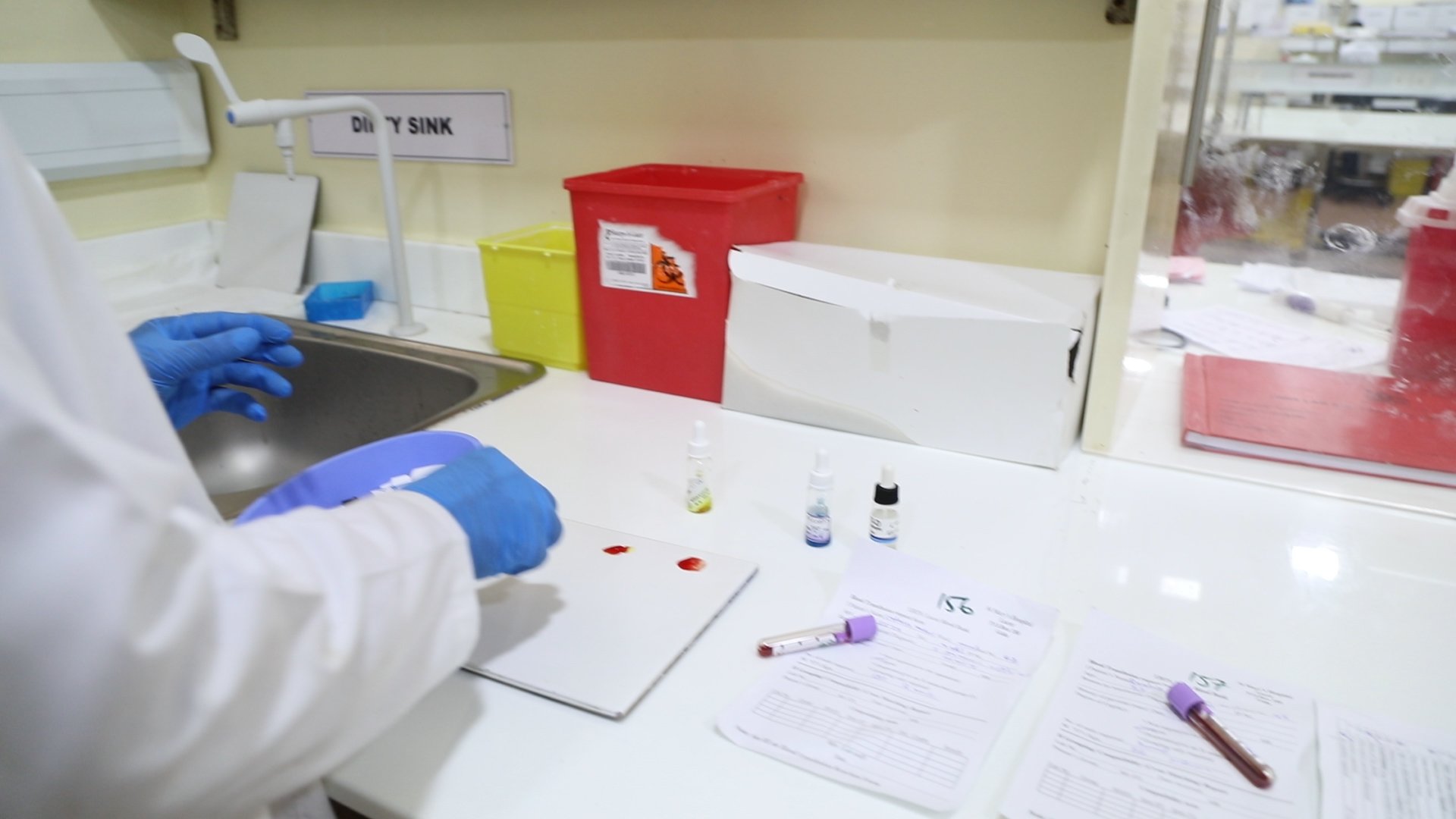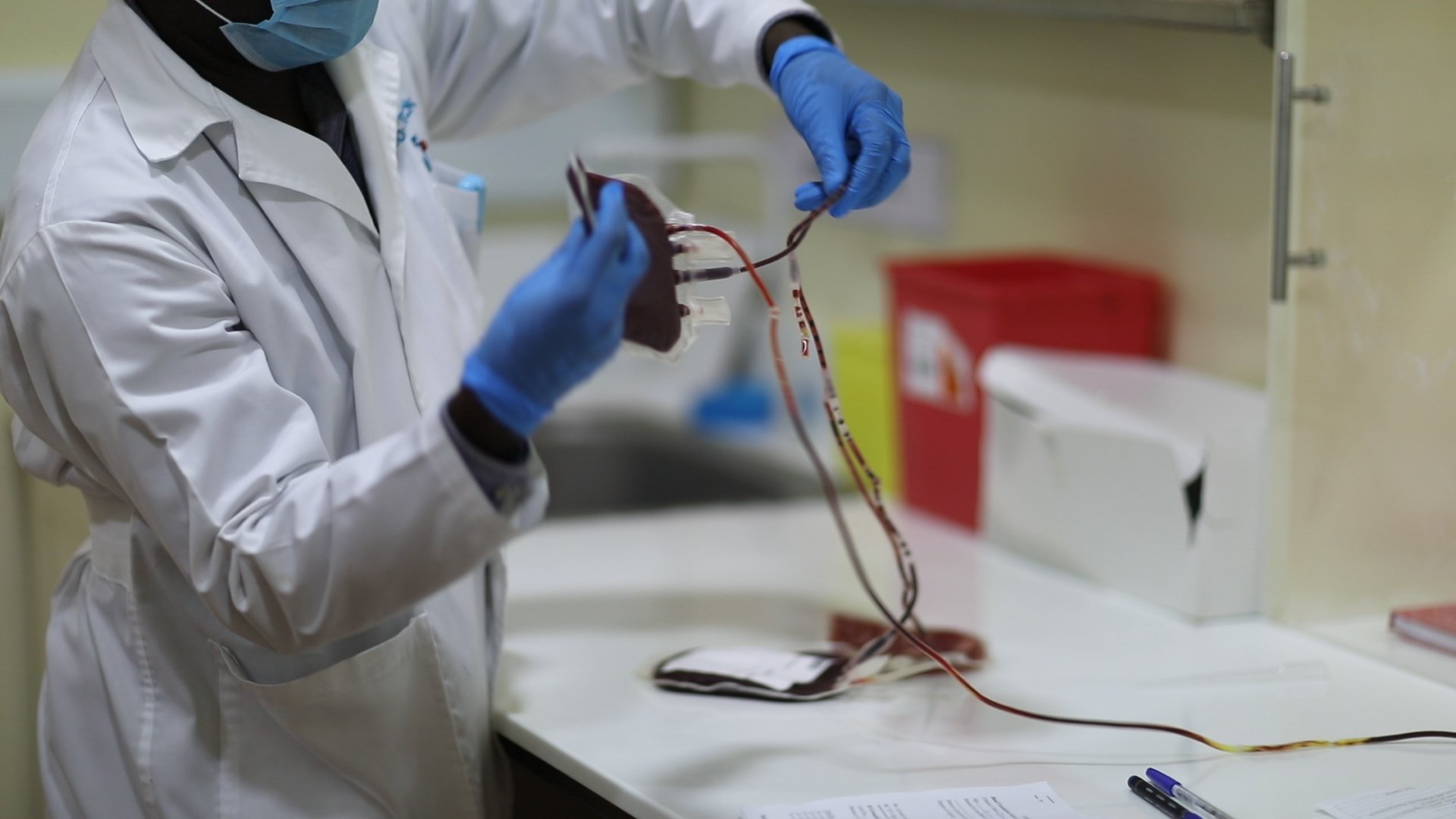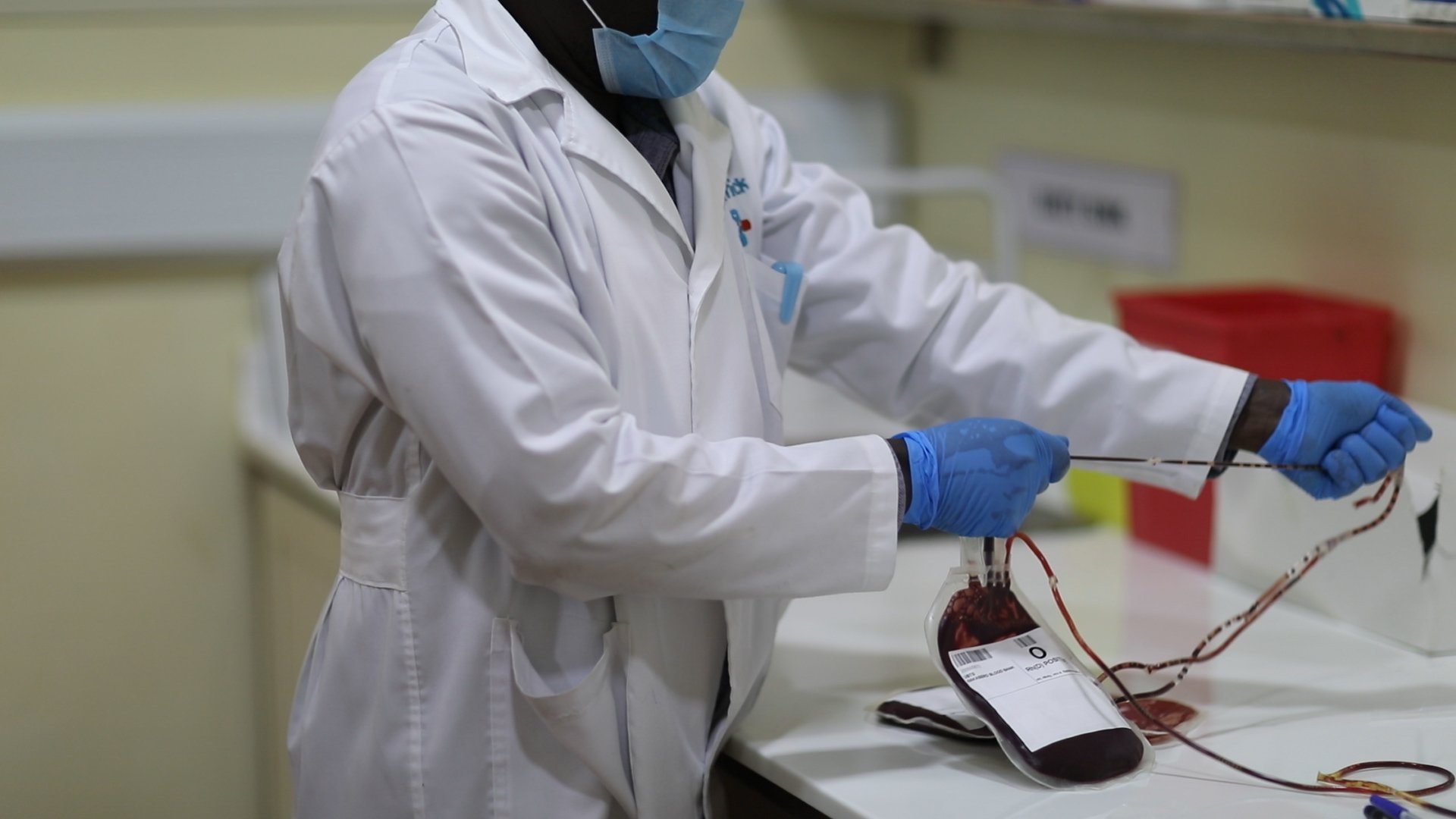Women and Children Are Still in Dire Need of Blood
June 14, 2022
WORLD BLOOD DONOR DAY
“Donating blood is an act of solidarity” is the theme at Lacor Hospital for this year’s commemoration of World Blood Donor Day. This theme expresses the desire of those fighting for their lives and a plea for others to become donors.
At Lacor Hospital, blood is in high demand. “We are facing a severe shortage. The supply we get from the regional blood bank is not even a quarter of what we use within the hospital,” says Richard Ojara, a Laboratory Technician at the Lacor.
According to Richard, the hospital requires at least forty units of blood a day to meet its demands, and more than 70% of those go to the children’s ward. At least three out of ten patients admitted to the hospital are children. Most of them suffer from severe malaria, sickle cell anemia, and anemia with unknown causes.
“As of today, 143 children have been admitted to the hospital. We gave transfusions to 136 of them within the last seven days,” says Ayot Grace Flona, a health worker in the Children’s Ward. “Daily, we give transfusions to up to 24 patients, but currently, the number is lower because there’s not enough blood. We require more than 30 units in a day,” Grace adds.
Because of this desperate situation, the hospital has turned to family members accompanying patients to the hospital to source blood. Richard Ojara says, “We request that patient caretakers become donors so we can generate some units of blood from within. In most cases, it is used immediately since the regional blood bank cannot supply enough.”
For health workers like Ayot Grace Flona, the most painful thing is watching your patients die and feeling helpless because there is no blood in stock. “Sometimes the lab is overstretched, and you end up losing your patient,” she says.
The maternity ward is the other hospital unit that consumes a lot of blood. As with the children’s ward, blood supply is the biggest challenge. Lacor delivers between 90 and 120 babies per month, more than any other regional health facility. Here, expectant mothers and their attendants are prepared in advance, especially those with C-Sections, so there is blood when needed.
The challenge with getting donations from within the hospital is there is no internal mechanism for tracking donors. As a result, caretakers can withhold information regarding the number of times they have donated to save patients.
The regional blood bank is located about two miles from Lacor Hospital. It supplies more than 15 districts and is the only facility in the region mandated to mobilize blood donations, screen blood, and distribute it to hospitals and health centers.
In a region plagued by high HIV and Hepatitis B infection rates, getting eligible donors is another hurdle Lacor Hospital must deal with. There’s no telling when the country will be able to control the deaths of women and children due to lack of blood. Lacor continues to educate community members on the importance of knowing their eligibility status and donating, remembering that “Donating blood is an act of solidarity.”"






